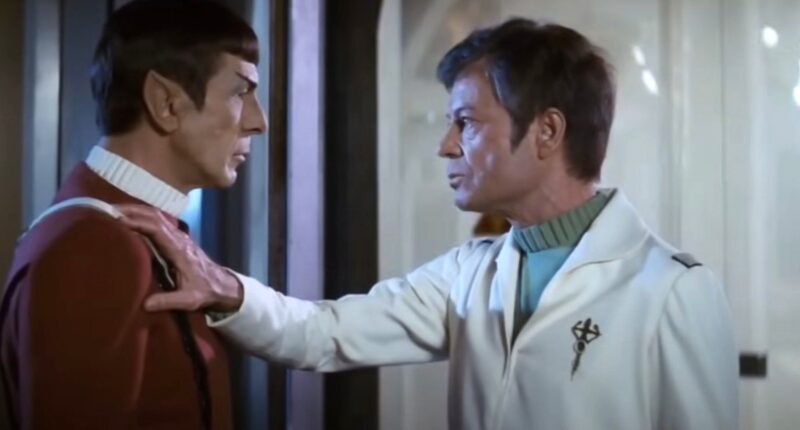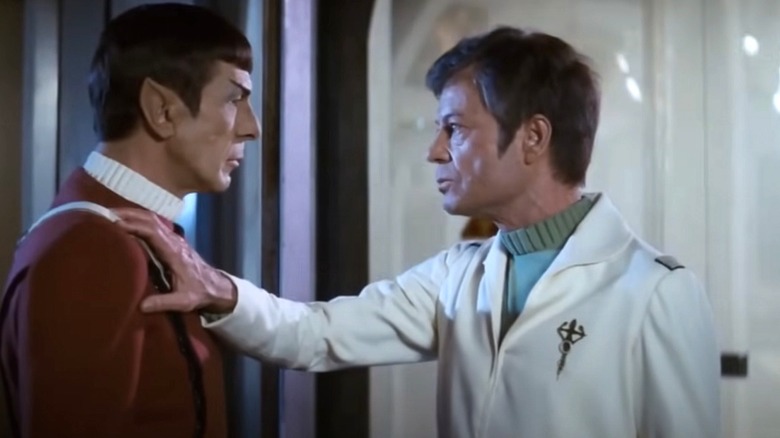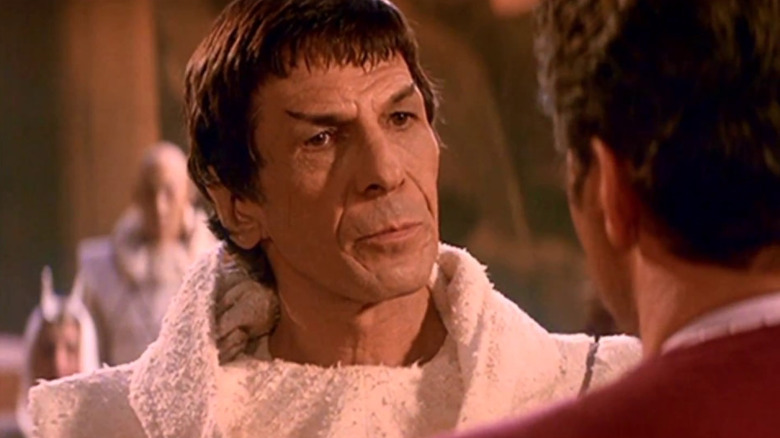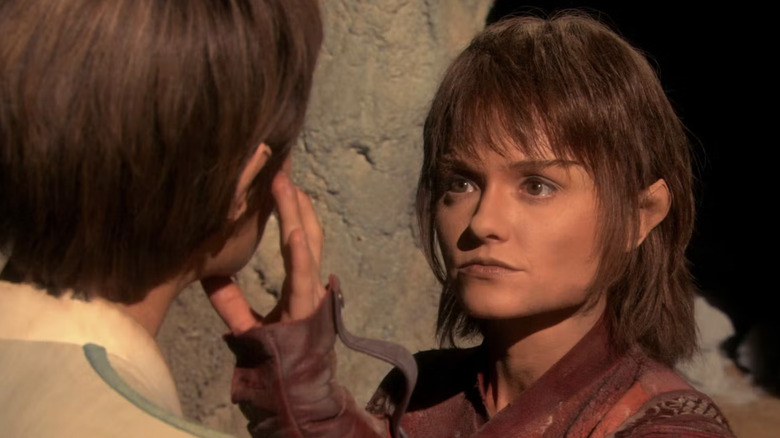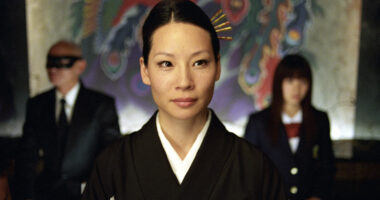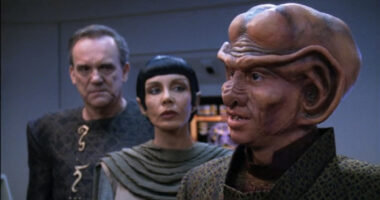Share this @internewscast.com
“Star Trek” premiered in 1966, and at a time when extensive franchises were not the norm, it’s unlikely that anyone anticipated storytelling extending not just 15 years into the future, but six decades. Yet, here we are, and upon reflection, it’s fascinating to discover that much of the series’ rich mythology originates from single lines created in the spur of the moment during filming or improvised by the actors. Star Leonard Nimoy was instrumental in these contributions, credited with devising both the Vulcan salute and the legendary nerve pinch — and that wasn’t all.
Nearly a decade after the series ended in 1969, “Star Trek” debuted on the big screen, with Paramount Pictures motivated by the newfound popularity of science fiction thanks to “Star Wars.” However, by the time the second movie rolled around, Nimoy was keen to abandon the role of Spock permanently. He was so resolved to exit the franchise that, for his participation in “Star Trek II: The Wrath of Khan,” the actor insisted on Spock’s death. The studio reluctantly acquiesced, resulting in one of cinema’s most memorable and emotional deaths, as Spock sacrificed himself for the Enterprise’s safety. However, Nimoy soon reevaluated his decision.
Experiencing a positive atmosphere while shooting the 1982 sequel led Nimoy to realize he wasn’t ready to make a permanent departure, and he wished to leave the door open for a possible comeback. With just a single word, Nimoy ensured he retained that possibility, thus preserving Spock and expanding “Star Trek” lore further.
Nimoy hedged his bets with a one-word ad-lib
In Leonard Nimoy’s second memoir, “I Am Spock” — which followed “I Am Not Spock” — the actor wrote about having a change of heart during the production of “Wrath of Khan.” He began to think there was a chance Paramount would film another “Star Trek” film, but didn’t realize “just how open that door might be.” Alongside screenwriter Harve Bennett, the pair hedged their bets and came up with a single line of dialogue that would keep that door wedged open. In fact, it was one word spoken by Spock as he performed the Vulcan mind-meld on an unconscious Dr. McCoy: “Remember.”
Nimoy claimed in his book that he didn’t know exactly what the plan would be. What was it that McCoy was supposed to remember? How would it allow for Spock’s return, if at all? But the pair didn’t worry about that in the moment; they simply performed the scene with this new line and left the logistics for the next movie’s writer and director to deal with. Ironically, that director turned out to be Nimoy.
The actor had long wanted to become a director, even campaigning unsuccessfully for directorial duties on episodes of the “Star Trek” TV show years before. Having happily filmed a death scene, Nimoy finally had leverage, because the studio needed him to return as Mr. Spock. Now, in order to get him, they also had to let him helm the sequel. Lo and behold, “Star Trek III: The Search For Spock” was born, with Nimoy behind the camera.
How Nimoy’s improv changed Star Trek forever
At the end of “Star Trek II: The Wrath of Khan,” Spock dies from radiation poisoning after entering the warp core to manually repair the ship’s engine in a desperate bid to save them from destruction. But thanks to the improvised line just before his heroic act, there was room to bring the character back from the dead. That resurrection added a key piece of Vulcan mythology to “Star Trek” lore, one with profound implications on the wider universe of stories: the katra — the Vulcan equivalent of a soul.
Though Spock’s “essence” had been referenced in the 1967 episode “Return to Tomorrow,” the Vulcan katra seems to be something very different. In “Star Trek III: The Search for Spock,” it’s explained that Vulcans can transfer their katra to another individual and live on after death, and that’s precisely what Nimoy’s ad-libbed line led to. “Search for Spock” sends Kirk and crew on a rogue mission to reunite Spock’s dead body with the katra hiding deep in the recesses of McCoy’s brain. This new concept forever changed the way we viewed Vulcans, who were now shown to possess a far more spiritual side than previously known.
Eventually, katras were explored further in other “Trek” stories. This includes a key three-part episode of “Star Trek: Enterprise” that reveals that the legendary founder of Vulcan logic had transferred his katra before death and had been hiding out in other people’s bodies for thousands of years. In “Star Trek: Discovery,” it’s even established that katras allow for a form of psychic communication, further expanding on the concept. Not a bad legacy for a single word added at the last minute to a movie script decades earlier.
